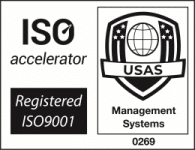Integrating electronics compliance at the early stages of your process minimises cost and impact. It can often make design decisions easier and result in a better product and a smoother running project.
So, when should compliance start? In theory, we could start on day one when writing the requirements. This could be as simple as picking the relevant standards and understanding if there are any specific ones that apply to your type of device. Moving forward, it is useful (but not essential) to have an overview of the requirements in the standards during the proof-of-concept stage. This is purely to avoid missing an essential feature or wasting time on a solution that can never be realised.
The alpha prototype stage is a good time to start working more closely with the standards. There are a few reasons for this, but the main motivations are to prevent going down rabbit holes and spending time on a product design that can never be realised.
Take something like creepage and clearance as an example. Without assessing these at an early stage, there is a bigger chance that the product could increase in size between phases. Additionally, not deciding on the electrical class or environmental conditions could have major implications on the materials or the construction of the product.
Creating an alpha prototype that can never be realised is a waste of resources. Ideally, each stage of the project should be evolutionary, so ignoring such a major driver will only add to the list of problems at a later stage.
This is why we at Blue Lightning Solutions always include compliance when planning and designing a project. This has become a speciality of ours, and we are available to help you with your project so that you can save time and money and get your product finished and on the shelves.


